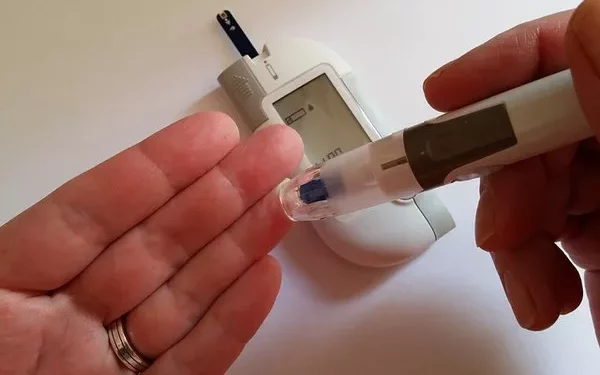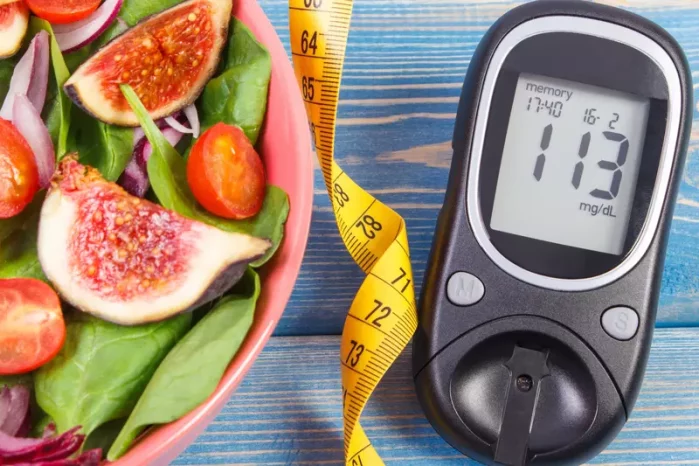Managing blood sugar levels through a balanced and healthy diet is one of the most effective ways to control diabetes. Type 2 diabetes, a condition characterized by high blood sugar, can often be managed or even prevented with proper lifestyle choices. One of the cornerstone strategies is maintaining a diet that promotes healthy blood sugar levels. In this article, we will explore a diet that can help lower blood sugar, along with tips on how to implement these dietary changes into your daily life.
Understanding Blood Sugar and Its Role in Diabetes
Blood sugar (or glucose) is the body’s primary source of energy. After consuming food, especially carbohydrates, the body breaks down the food into glucose, which then enters the bloodstream. Insulin, a hormone produced by the pancreas, is responsible for helping glucose move into cells for energy. In people with diabetes, either the pancreas does not produce enough insulin, or the body becomes resistant to the insulin it does produce. This leads to elevated blood sugar levels, which can cause a variety of complications if left uncontrolled.
For people with diabetes or those at risk, managing blood sugar levels is crucial. This can be achieved not only through medication but also through lifestyle changes, with diet playing a significant role.
The Importance of Diet in Blood Sugar Control
Diet is the most fundamental and controllable factor in blood sugar management. The right food choices can help stabilize blood sugar levels, reduce insulin resistance, and decrease the risk of complications. A healthy diet, combined with regular physical activity, is the cornerstone of effective diabetes management.
Key Dietary Principles for Lowering Blood Sugar
Several dietary principles can help lower blood sugar levels. These principles focus on the types of foods you eat, the quantity, and the timing. Below, we outline these principles and provide actionable recommendations.
1. Focus on Low Glycemic Index Foods
The glycemic index (GI) measures how quickly foods raise blood sugar levels after consumption. Foods with a high GI cause a rapid spike in blood sugar, while foods with a low GI cause a slower, more controlled rise. Choosing low-GI foods can help regulate blood sugar levels more effectively.
Low-GI Foods: Non-starchy vegetables, whole grains, legumes (lentils, beans), nuts, seeds, and some fruits like berries, apples, and pears.
High-GI Foods to Avoid: Refined grains, sugary beverages, white bread, processed snacks, and high-sugar fruits like pineapple and watermelon.
Opt for whole, unprocessed foods like vegetables, fruits, and whole grains, which have a lower glycemic index compared to processed and refined foods. These foods not only help maintain stable blood sugar levels but also provide essential vitamins, minerals, and fiber.
2. Include Fiber-Rich Foods
Dietary fiber, particularly soluble fiber, plays an essential role in controlling blood sugar levels. Fiber slows down the absorption of sugar into the bloodstream, preventing rapid spikes in blood glucose. Additionally, high-fiber foods promote better digestion and help maintain a healthy weight, both of which are critical for diabetes management.
Good Sources of Fiber: Vegetables (broccoli, spinach, Brussels sprouts), fruits (apples, pears, berries), whole grains (oats, quinoa, barley), legumes (beans, chickpeas, lentils), and seeds (chia seeds, flaxseeds).
Aim to include a variety of fiber-rich foods in each meal. A high-fiber diet will not only help lower blood sugar levels but also support digestive health, enhance satiety, and improve overall well-being.
3. Choose Lean Proteins
Protein helps regulate blood sugar by slowing the absorption of glucose and preventing blood sugar spikes. Lean protein sources can help manage hunger while supporting muscle health. Unlike carbohydrates, protein does not cause a rapid increase in blood sugar.
Lean Protein Sources: Skinless poultry, fish (especially fatty fish like salmon, mackerel, and sardines), tofu, tempeh, eggs, low-fat dairy products, and plant-based proteins like beans and lentils.
Including lean proteins in your meals can help you feel full longer, reduce overall calorie intake, and prevent overeating, which ultimately contributes to better blood sugar control.
4. Limit Refined Carbohydrates and Sugary Foods
Refined carbohydrates and sugary foods cause quick spikes in blood sugar levels. These foods are often high in calories but low in nutritional value. Processed foods, such as white bread, pastries, and sugary snacks, are quickly broken down into glucose and absorbed into the bloodstream, leading to fluctuations in blood sugar.
Foods to Limit or Avoid: White bread, pasta made from refined flour, sugary snacks, cookies, cakes, sodas, fruit juices, and candy.
Instead of refined carbs, opt for complex carbohydrates such as whole grains, legumes, and vegetables. These carbs are digested more slowly, providing a steady supply of energy without the abrupt increases in blood sugar levels that refined carbs trigger.
5. Control Portion Sizes and Meal Timing
Managing portion sizes and spreading out meals throughout the day can help regulate blood sugar levels. Large meals can lead to significant blood sugar spikes, while smaller, more frequent meals can help stabilize blood sugar levels. Eating smaller portions can also prevent overeating, which may contribute to weight gain and insulin resistance.
Meal Timing Tips: Aim for three balanced meals per day, with healthy snacks between meals if needed. Try to eat your meals at regular intervals, and avoid large gaps between meals to prevent blood sugar dips.
Additionally, consuming smaller, well-balanced meals with a mix of protein, healthy fats, and complex carbohydrates helps avoid large blood sugar fluctuations.
6. Incorporate Healthy Fats
Not all fats are created equal. Healthy fats, such as those from avocados, nuts, seeds, and olive oil, can help improve insulin sensitivity and support heart health, which is important for people with diabetes. On the other hand, unhealthy fats, such as trans fats and saturated fats found in processed and fried foods, can contribute to insulin resistance and increase the risk of cardiovascular disease.
Healthy Fats to Include: Avocados, olive oil, fatty fish (salmon, mackerel), nuts (almonds, walnuts), seeds (flaxseeds, chia seeds), and nut butters (unsweetened).
Healthy fats can help reduce inflammation, improve blood sugar control, and enhance the absorption of fat-soluble vitamins like vitamins A, D, E, and K.
7. Limit Alcohol Intake
Excessive alcohol consumption can have a negative impact on blood sugar control. Alcohol can interfere with the liver’s ability to release glucose into the bloodstream, leading to drops in blood sugar levels. On the other hand, alcohol also contains carbohydrates that can raise blood sugar.
Alcohol Recommendations: If you choose to drink, do so in moderation. For women, this means no more than one drink per day, and for men, no more than two drinks per day.
When consuming alcohol, try to eat a meal that includes protein, healthy fats, and fiber to minimize the blood sugar impact. Avoid sugary mixed drinks or high-carb beer.
8. Stay Hydrated
Drinking enough water is essential for overall health and can help with blood sugar management. Proper hydration helps the kidneys remove excess sugar through urine and can prevent dehydration, which can be a risk for people with diabetes.
Water Intake Recommendations: Aim for 8-10 glasses of water per day. If you’re physically active, you may need more to stay hydrated.
Water is the best choice for hydration. Avoid sugary beverages, such as sodas, sweetened teas, and energy drinks, which can lead to spikes in blood sugar.
9. Consider Anti-Inflammatory Foods
Chronic inflammation is thought to play a role in the development and progression of insulin resistance and type 2 diabetes. Consuming anti-inflammatory foods may help reduce this risk. These foods include omega-3-rich fatty fish, colorful vegetables, fruits like berries, and certain herbs and spices like turmeric and ginger.
Anti-Inflammatory Foods: Fatty fish (salmon, sardines), leafy greens (spinach, kale), colorful vegetables (peppers, tomatoes), berries (blueberries, strawberries), and spices (turmeric, ginger).
Incorporating anti-inflammatory foods into your diet may reduce the risk of complications associated with diabetes, such as cardiovascular disease and neuropathy.
Sample Meal Plan for Lowering Blood Sugar
Here’s a sample meal plan to help guide you in managing blood sugar levels through diet:
Breakfast: Oatmeal made with rolled oats, chia seeds, and a handful of berries. Pair it with a side of scrambled eggs or a small serving of Greek yogurt for added protein.
Lunch: Grilled chicken salad with spinach, kale, tomatoes, cucumbers, and a drizzle of olive oil. Add a small portion of quinoa or brown rice for healthy carbohydrates.
Snack: A handful of almonds or walnuts with a piece of fruit, such as an apple or a pear.
Dinner: Grilled salmon with roasted vegetables (such as zucchini, broccoli, and cauliflower) and a side of sweet potato or another whole grain.
Snack: A small portion of Greek yogurt with a sprinkle of flaxseeds or chia seeds.
This meal plan includes fiber-rich vegetables, lean proteins, healthy fats, and complex carbohydrates, all of which contribute to stable blood sugar levels.
Conclusion
Adopting a healthy, well-balanced diet is crucial for managing blood sugar levels and preventing the onset of type 2 diabetes. By focusing on whole, nutrient-dense foods, limiting processed foods and refined sugars, and incorporating fiber, healthy fats, and lean proteins, individuals can significantly improve their blood sugar control. Along with regular physical activity and maintaining a healthy weight, these dietary changes can help prevent and manage diabetes while improving overall health.
It is important to note that dietary changes should be made under the guidance of a healthcare provider, especially for individuals with existing health conditions like diabetes. Regular monitoring of blood sugar levels, along with appropriate diet and lifestyle modifications, can go a long way in promoting long-term health and reducing the risk of complications.
Related topics:
What’s Random Blood Sugar Readings in Diabetes Management



























